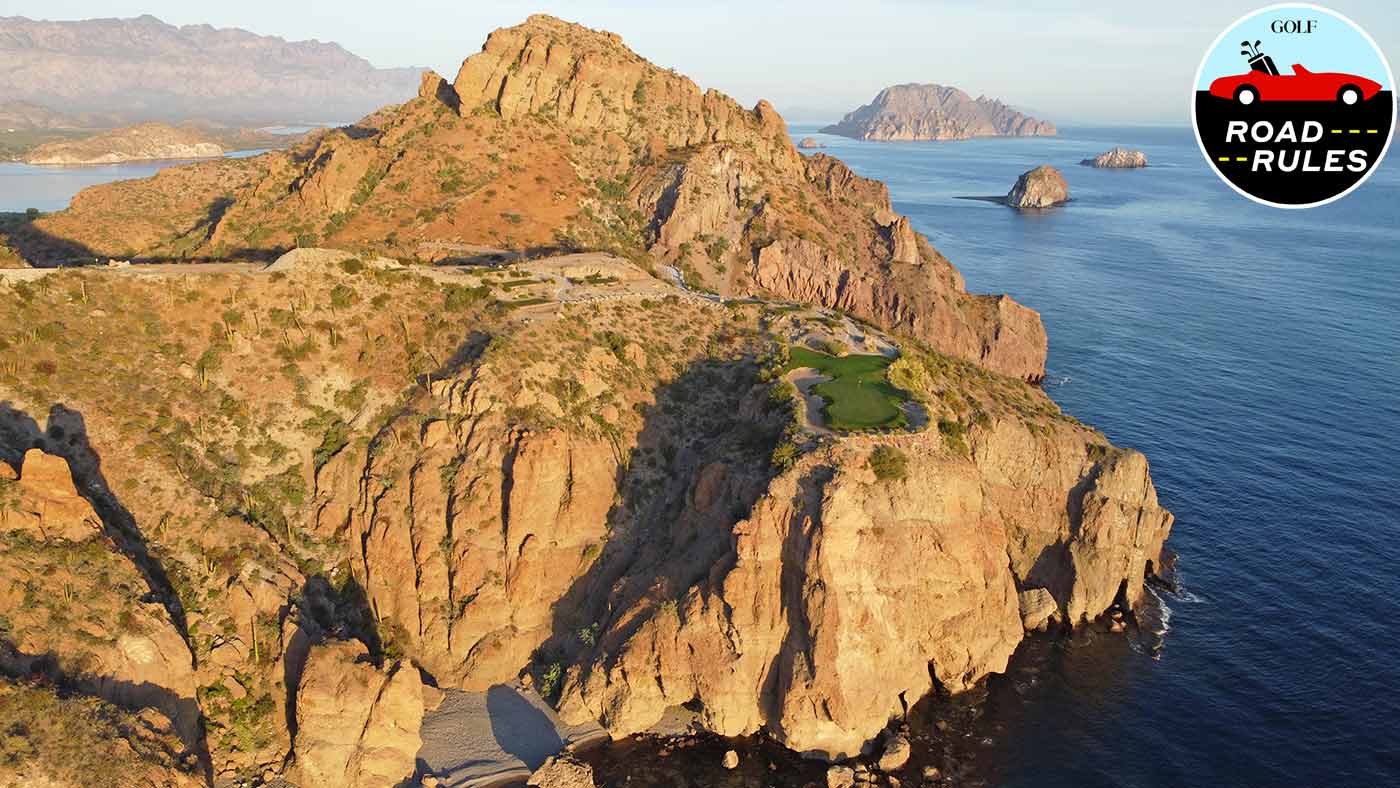I’m standing on the 17th tee at TPC Danzante Bay, 9-iron in hand, and I’m completely captivated by the scene. You would be, too.
Below me a ragged run of land, a finger not more than 30 feet across, juts out into the Sea of Cortez. Some 150 yards away a little red flag flickers on the emerald-green spit. The sky — somewhere out there, where the marlin and mahi-mahi make their home — melds with sea in the distant, metal-blue void. Framed by deadly 100-foot cliffs, my target is roughly the size of an NFL end zone. I calibrate the warm-and-salty wind and prepare to play one of the world’s great par-3s.
The penultimate hole at the TPC Danzante Bay GC is — for high-stakes drama and jaw-dropping visuals — in a league of its own. Golf holes just don’t get more stunning than this. (In my opinion, the only hole that comes close to matching it for its cliff-side characteristics is the 16th hole at Nova Scotia’s Cabot Cliffs. But I haven’t played all the famous “cliff” holes in golf. Hawaii, I know, also boasts a couple of good ones.)
But this isn’t just an eye-candy hole built purely for kicks and giggles. It’s an exquisite little challenge that blends beauty and brawn in pitch-perfect proportion.
“Many of the great par-3s in the world don’t boast big targets,” says Rees Jones, the architect at TPC Danzante Bay. “The 7th at Pebble, the 12th at Augusta, the 8th at Royal Troon are examples that immediately come to mind. The 17th at Danzante is also in that ‘short and diabolical’ genre.”
While this spectacular seaside hole, which is fast becoming one of the most recognized and photographed holes in golf, may have taken four months to build, the entire layout at Danzante Bay was actually a four-year labor of love.
“We had time at Danzante to get it right,” says Jones. “The course was done in stages. And when we discovered the cliff site for the 17th we knew we had a once-in-a-lifetime opportunity to build a special hole. But the pitch on the cliff was wrong. It sloped towards the water. So we had to change that. We also had to re-route a number of holes to make it all work. But, in the end, the course actually fit together better. I guess it was meant to be.”
Thanks to the relatively thin and angled target, a high, soft-landing fade is the ideal shot to play. While the yardage varies depending on what tee you’re playing, it’s typically a 150-yard, all-carry shot that’s required. (On a personal note, my low, clenched-teeth hook, which works perfectly when the wind is blowing 120-mph from the left, I might add, isn’t the ideal play here.)
Also, a life-saving (literally) catch bunker, which rings the peninsula green, adds to the hole’s playability. In other words, there’s a chance your less-than-perfect shot will stay somewhere that won’t require ropes, harnesses, and some type of submarine rescue capsule to retrieve.
Another key element here — especially for anyone considering a journey to Danzante Bay — is the fact that Jones and his team crafted a thrilling 18-hole course that isn’t just a one-trick pony. The entire layout — which incorporates mountains, deep arroyos, beautiful valleys, and another short-and-sweet run to the sea — is strong from start to finish.
True, it takes a little work to get to Danzante Bay. (You’ve got to fly to Loreto, Mexico.) However, when you stand on the 17th tee, trust me, it’ll all be worth it. Bring a camera. And leave your hook at home.
Andrew Penner is a freelance writer and photographer based in Calgary, Alberta. You can follow him on Instagram at @andrewpennerphotography.
